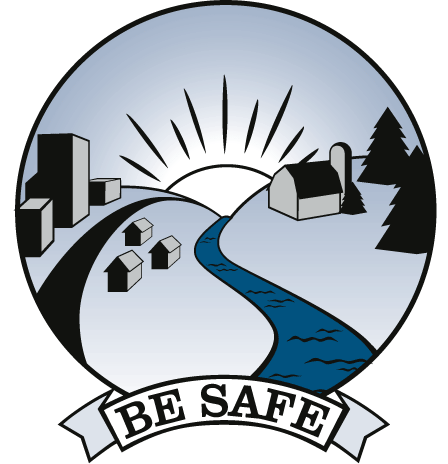![]()
![]()
![]()
Protect Our Kids
From Mercury

How does mercury get into our environment?
While mercury is a naturally occurring toxic metal, levels of mercury in the environment have increased three fold since pre-industrial times due to man-made activities. [UNEP] Mercury has been used in many products and industrial processes, but its uses are increasingly being phased out in many applications. This is because when mercury is emitted into the air, primarily by power plants, industrial processes and waste disposal, it becomes a serious public health threat. Once released into the air, mercury settles in oceans and waterways. Bacteria in the water then convert the mercury to a form called methylmercury, which when ingested is particularly dangerous to humans. Fish absorb methylmercury from water as it passes over their gills and when they eat other aquatic organisms. As larger fish eat smaller ones, concentrations of mercury bioaccumulate in the larger fish. Because mercury keeps accumulating in the fish, larger and older fish have higher levels of mercury. Americans are primarily exposed to unsafe levels of mercury by eating contaminated fish. [NAS]
What are the health effects of mercury pollution?
Even
at low doses, methylmercury is a powerful, dangerous toxin. Once
in the human body, mercury interferes with brain development and
can lead to neurological diseases and developmental problems, including
delayed language development, impaired memory and vision, learning
disabilities, attention deficit disorders and mental retardation.
[PSR]
Mercury
poses the greatest risk to the fetus and children’s developing brains.
Methylmercury is absorbed into the bloodstream and can be passed
by a mother to her developing fetus, interfering with the development
of the brain and the nervous system. Recent EPA estimates indicate
that one in six women of childbearing age have blood mercury levels
that exceed what is considered safe for a fetus. Approximately 630,000
newborns are threatened every year by being exposed to unsafe levels
of mercury in the womb. [Mahaffey] Additionally, infants are
exposed to mercury through their mothers’ breast milk, and children
can ingest mercury from eating fish such as canned tuna.
Is the government doing what is necessary to protect us from mercury?
The
federal government has recently taken actions that fail to protect
the public adequately from exposure to mercury. The Environmental
Protection Agency (EPA) is proposing to weaken efforts to control
mercury emissions from coal-fired power plants, the largest unregulated
source of mercury. The EPA originally classified mercury as a hazardous
pollutant and determined that it was feasible using current technology
to reduce emissions by 90% (from about 50 to 5 tons yearly) in three
years. [EPA] However, the EPA’s current plan treats mercury
as an ordinary air pollutant instead of a hazardous one, and power
plants would only be required to reduce emissions by 30% over 15
years. [NRDC1] Moreover, some plants would be able to avoid
or delay reducing mercury emissions by buying pollution “credits”
from cleaner plants.
In
2004, the Food and Drug Administration (FDA) released a new advisory
warning the public about eating mercury-contaminated fish. The advisory
states that people should not eat shark, swordfish, king mackerel,
or tilefish. It also states that people should only eat up to 12
ounces a week of a variety of other fish, although only six ounces
of albacore (white) tuna should be eaten per week. But this advice
is less protective than what EPA recommends, a health-based
standard supported by the National Academy of Sciences. Eating 12 ounces of certain higher mercury fish in a given
week could result in mercury exposure well over what EPA recommends.
Also, even a 6 ounce serving of Albacore is too much for many
individuals. For instance, a 130-pound woman who eats 6 ounces of
albacore tuna would get one and one half times the level of mercury
exposure that the EPA says is safe. And a 22 pound child eating
only 2 ounces of albacore canned tuna would exceed by three fold
what EPA says is safe. With regard to children, the advisory simply
states that parents should follow the same recommendations but serve
smaller portions. This is not adequate. The advisory should provide
separate, specific advice defining safe fish eating habits for children
of various ages, whose smaller bodies mean they can eat fewer and
smaller portions of mercury-contaminated seafood.
BE SAFE: Take Precautionary Action to Prevent Mercury Contamination